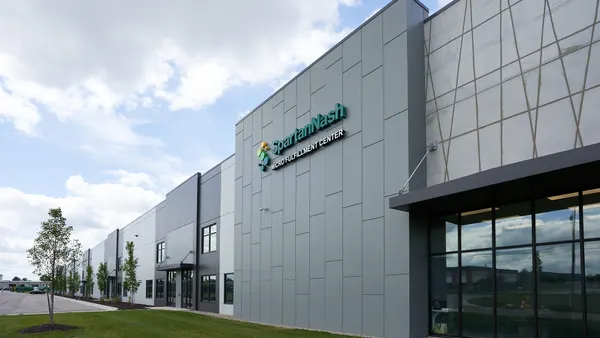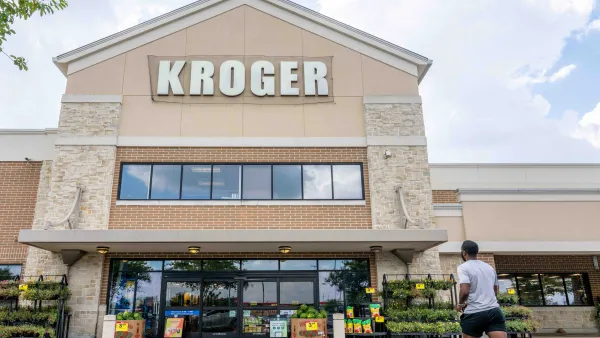Dive Brief:
- Blue Apron, which has yet to turn a profit since it went public in June of 2017, said it will lay off 4% of its total workforce. As a result, the meal kit maker expects to generate annual savings of approximately $16 million in 2019.
- "We are taking decisive actions to prioritize our highest-impact opportunities and build a stronger, sustainable business," Brad Dickerson, Blue Apron's CEO, said in a statement. "As a result of these actions now underway, we expect to be profitable on an adjusted EBITDA basis in 2019.”
- Separately, Blue Apron said net revenue decreased 28% year-over-year to $150.6 million in the third quarter compared to the same period a year ago, driven primarily by a decrease in customers as the company was more deliberate in its marketing expenses. Net loss during the period was $33.9 million compared to a loss of $87.2 million a year ago.
Dive Insight:
Blue Apron has been hit by one piece of bad news after another since it went public in June 2017. The challenges intensified Tuesday after the meal kit maker said it would further reduce its workforce in an effort "to create a more agile and focused organization."
Blue Apron also said it would focus more on its direct-to-consumer business by targeting customers that have proven retention, show a strong affinity for the brand and have a high potential to increase engagement with the company's product offerings. In addition, Blue Apron will aim to sell more of its meals through retail channels and on-demand platforms, echoing previous partnerships in place with Costco and Walmart's Jet.com.
"Blue Apron has an established brand and a strong foundation of loyal customers who trust and rely on the quality and convenience of our products," Dickerson said in a company statement. "We are taking decisive actions to prioritize our highest-impact opportunities and build a stronger, sustainable business."
The New York maker of pre-portioned meals has struggled with mounting losses and customer retention, reflecting growing competition, broader prepared meal options at stores and a reluctance by some shoppers to use a subscription-based service. Earlier this week, Hello Fresh said it had 1 million subscribers in its third quarter, up from 790,000 a year earlier, according to The Wall Street Journal. The paper noted that profit declined as the meal kit company spent more to compete in the U.S. market.
Along with industry-wide challenges, Blue Apron has faced its own self-inflicted problems. It has struggled with high operating costs and costly facilities, including a fulfillment center in New Jersey that went live too early. Major executives, including two of its co-founders and a COO, have all left the company. Blue Apron said its chief marketing officer left earlier this week. These obstacles are reflected in its stock price that is down about 90% since its IPO last June.
Blue Apron's decision to focus operations on its core customer base and expand its reach into other channels is a sound move for a company that has struggled to right itself and achieve a profit. During the quarter, it posted disappointing figures across all key metrics. The number of people using the service fell to 646,000 from 717,000 in the prior quarter, and 856,000 in the third quarter of 2017, as a drop in marketing expenses weighted on results. The average order value, orders per customer and average revenue per customer all declined.
The layoffs are the second major cut to its workforce in a little more than a year, following the loss of about 300 people in October of last year. As the company's user base continues to erode, it makes sense for Blue Apron to tailor its employment level to better reflect product demand.
It's uncertain whether the latest moves are enough to salvage the company, or whether it can expand its reach beyond its core direct-to-consumer channel to sufficiently grow its business. Blue Apron now sports a market cap of $225.3 million, compared to close to $2 billion at the time of its IPO. This could potentially make it a cheap acquisition target for Amazon, Walmart or another retailer looking to make a splash in the meal kit space with a brand that has widespread recognition.











